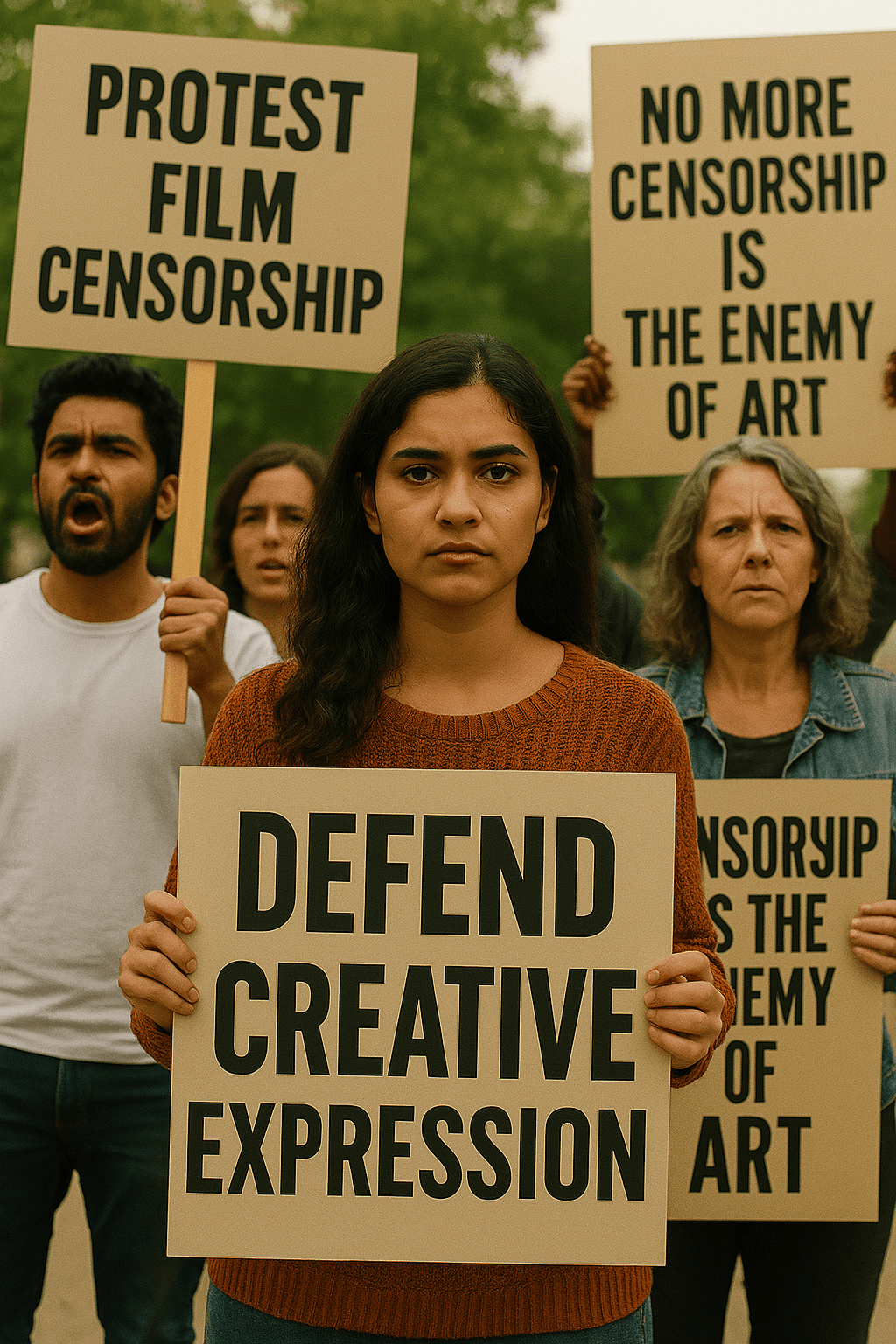
‘Santosh’ Film Banned in India Despite Global Acclaim
The Indian film Santosh, directed by British-Indian filmmaker Sandhya Suri, has sparked intense debate after Indian authorities banned it despite international recognition. With a storyline that tackles police brutality, caste-based violence, and institutional misogyny, Santosh has emerged as a bold example of artistic courage. The backlash against it highlights deeper issues in Indian society and its censorship system.
An Acclaimed Film, Hidden at Home
Santosh premiered at the Cannes Film Festival in 2024, where it earned rave reviews and received an Academy Award nomination for Best International Feature. Critics applauded its raw storytelling and complex characters. The film follows a young widow, Santosh, who becomes a police officer in rural North India. Her journey transforms into a powerful narrative on justice, social inequality, and personal awakening.
Yet, Indian audiences cannot access the film. The Central Board of Film Certification (CBFC) declined to certify it, leading to an effective ban. As a result, the film’s absence from Indian screens has fueled national conversations on censorship and the difficulties of addressing sensitive themes through cinema.
The Plot That Sparked Controversy
Santosh explores the harsh realities that a female police officer confronts while working in a patriarchal and caste-conscious society. After she receives an assignment to investigate the rape and murder of a Dalit girl, Santosh encounters resistance from her superiors. The story shines a light on systemic bias within law enforcement and how marginalized voices often go unheard.
Real events and prevailing social dynamics inspired the plot. By centering a Dalit victim in a crime investigation and portraying a woman navigating an unjust system, the film boldly enters territory that mainstream Indian films typically avoid.
Why Did the CBFC Santosh film banned in India?
According to insiders familiar with the CBFC’s process, the board considered the film “politically sensitive” and objected to its portrayal of police conduct. They specifically flagged scenes involving custodial violence, religious symbolism, and critical dialogue about institutional practices.
Filmmaker Sandhya Suri publicly criticized the decision, calling it a form of censorship that stifles necessary dialogue. She stated, “The role of cinema is not only to entertain but also to provoke thought. Santosh tells a story that needs to be heard.”
This incident has reignited concerns about the CBFC’s lack of transparency and its track record of limiting sociopolitical narratives. Critics believe that the board often embraces conservative perspectives, thereby curbing artistic freedom.
Global Recognition and Support
Despite its exclusion from Indian theaters, Santosh has earned international praise. Audiences at Cannes gave it a standing ovation, and reviewers from The Guardian, Variety, and Hollywood Reporter celebrated its compelling direction, cinematography, and acting.

Human rights groups have also spoken out. Amnesty International and PEN America criticized the film’s censorship, warning that such actions weaken democratic principles and suppress creative voices.
A Pattern of Suppression
The banning of Santosh follows a familiar pattern. In recent years, Indian filmmakers addressing caste, gender violence, or political critique have often clashed with the CBFC. Examples include India’s Daughter and Lipstick Under My Burkha. In each case, censorship appeared to target content that challenged mainstream narratives.
So, why do institutions resist films that reveal uncomfortable truths? Filmmakers argue that this suppression discourages reflection and prevents much-needed social dialogue.
What It Means for Indian Cinema
Cinema in India has long served as a mirror to society. When a film like Santosh faces restrictions, the medium’s potential to promote critical conversations suffers. Moreover, independent creators may feel discouraged from tackling complex issues.
This episode has drawn attention from global observers concerned about artistic freedom in India. While Indian cinema garners global appreciation, domestic constraints tell a more complicated story.
The Future of ‘Santosh’
Even though the film remains banned in India, Santosh continues to find viewers abroad via digital platforms. Discussions have already begun with international streaming services to make the film accessible to Indian audiences. However, even this route may involve regulatory challenges.

In the meantime, film societies, rights activists, and university groups have stepped in. They are organizing underground screenings and public forums to keep the conversation alive. Their efforts aim to ensure that Santosh becomes a catalyst for reform in India’s film regulation policies.
Final Thoughts: A Battle for Creative Freedom
The ban on Santosh sends a powerful message about the current state of artistic freedom in India. Rather than silencing its themes, the decision to block the film has only amplified its importance.
Art exists to challenge, inspire, and transform. Santosh deserves a platform—not censorship. Audiences deserve access to stories that reflect the complexities of the world they live in.







Add comment